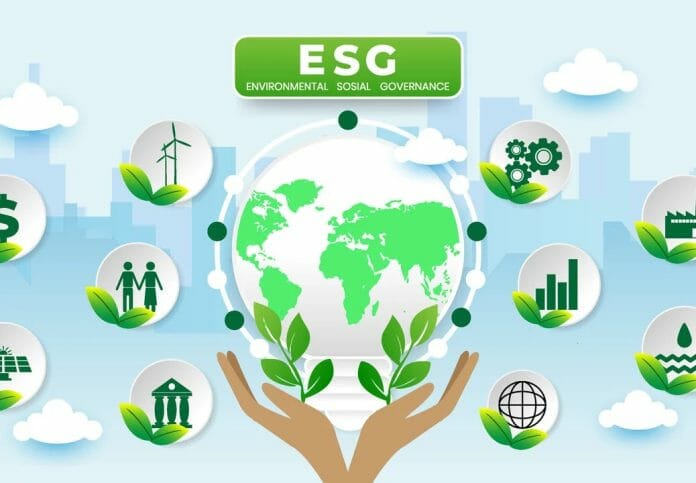Consumers today want action. Business leaders have publicly reflected so much on how the world has changed post-2020—the impacts of the pandemic, social justice movements, the increasingly troubling effects of climate change—that corporate promises to change the world risk sounding hollow. And yet, consumers are not only hungry for those commitments, but they are also anxious for organizations to do more.
This is where a rift emerges. Executives say they want more resources committed to environmental, social, and governance (ESG) progress. The vast majority of consumers agree that organizations should be leading ESG efforts, and most employees agree that they want to work for enterprises that live their values. But once leaders make big promises, consumers and executives strongly disagree on whether businesses are actually committed to change. “Tackling projects to solve the world’s biggest problems is no small undertaking,” notes Joe Cahill, chief customer officer at Project Management Institute (PMI) and UN Global Compact Network USA board member. “It’s what society demands of modern business—and that means showing clear evidence of progress.”
Unpacking the intricacies of ESG work
Ample research shows that staying true to ESG commitments makes sense from every angle. Besides fulfilling ethical expectations, impact work increases profits, appeases forward-thinking investors, and improves corporate reputations among potential customers, especially millennials and Gen Zers.
“Organizations have to ensure that positive social impact is embedded into the very fiber of their projects—whether the intent is to boost inclusion among employees or improve access to health care,” says Cahill. But while he stresses the urgency of ESG work, he also acknowledges the intricacy of the types of global, longstanding issues that have been dissected in the news and across social media. “These are unprecedented challenges with no single best answer,” he adds. “The world’s problems, and the solutions aiming to solve them, are more complex than ever before.”
Although organizations have invested in ESG programming, finances alone can’t fix today’s “wicked problems”—a term coined nearly 50 years ago to describe challenges that lack simple answers, have no trial-and-error options that don’t impact real lives, and show no definitive signs of being “solved.” Many of society’s most urgent concerns, such as curbing climate change, addressing the ever-widening wealth gap, or making workforce opportunities truly equitable, could fall under this classification. Even starting to address these massive undertakings requires employees to test new ways of thinking, stresses Cahill. “And businesses must foster a culture of more innovative problem-solving that makes these issues more visible,” he says. To help businesses and individuals learn and apply problem-solving practices, PMI—in partnership with technology and design pioneer Tom Wujec—offers an online course and downloadable toolkit, PMI Wicked Problem Solving®. Incorporating the best of design thinking, agile, Lean, project management, and other modern ways of working, PMI Wicked Problem Solving enables businesses and individuals to find more innovative ways to efficiently collaborate and build roadmaps for tackling today’s toughest problems.
Bringing issues into the open and making plans to address them via incremental, measurable improvements is where Cahill says the project management mindset is invaluable. Before a corporation can hit net zero or increase the diversity of its highest ranks, leaders and teams must be able to name challenges, document them, and identify clear milestones to measure progress with data. Otherwise, he says, stagnation can creep across organizations, causing them to break their promises to all consumers closely watching. PMI is helping companies keep these promises by equipping them with the skills needed to succeed and deliver sustainable outcomes through projects. In 2022, PMI launched a strategic partnership with Green Project Management to equip project managers and organizations with the tools and expertise needed to deliver greater value on global sustainability strategies, goals, and visions.
Addressing the intention-action gap
Plenty of companies have ESG targets they’ve publicly committed to meeting. Fewer know the tangible ways they’ll get there. As of late 2021, 70% of influential corporate board leaders say they’re not sure how climate change will impact their operations or customers, for example, and almost one-half admit they don’t have the basic climate literacy to take sweeping actions with confidence.
Thinking like a project manager can help leaders and teams take their first small steps toward big goals. With strong planning and tracking skills, a keen ability to motivate others and keep them on task, and the agility to work around mishaps, project professionals are especially primed for these efforts.
“It’s about identifying issues in the workplace, systematically tackling obstacles, asking effective questions to draw out unique ideas, and getting ‘bystanders’ involved in forward-moving tasks,” says Cahill. And, he adds, even though project professionals are quick studies on ESG undertakings, it’s everyone’s responsibility within an organization to take action. One-third of leaders polled in June 2021 say a lack of support from senior leadership impeded ESG progress, notably topping other concerns like busy schedules and stretched-thin budgets.
To start movement on major initiatives, Cahill says the work begins with auditing ESG gaps and opportunities within an organization. After that—with the help of project managers—teams can align on clear performance metrics, beyond profitability, and empower team members to keep their departments pushing forward. Along the way, Cahill recommends upskilling and reskilling more employees on project management capabilities.
“There’s an intention-action gap on these major commitments: a divergence between what we say we’d like to do and what we actually do,” says Cahill. “The project manager role, by design, is all about putting action behind promises. It’s about tracking progress while an organization turns intent into action.”









